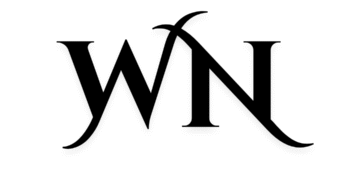By world now Global Business Correspondent
Date: May 31, 2025
Washington, D.C. — Former U.S. President and 2024 Republican nominee Donald Trump announced a sweeping new trade policy this week, declaring a 50% tariff on steel imports and unveiling what he called a “blockbuster” bilateral trade agreement with Japan. The announcement marks a sharp shift in the global trade landscape and signals Trump’s return to his signature “America First” economic agenda as he campaigns to return to the White House.
Speaking at a rally in Pennsylvania — a state with a significant steel industry — Trump said the tariff was designed to protect American manufacturers from what he called “unfair foreign competition,” particularly from China and other low-cost producers that, according to Trump, “dump cheap steel and kill American jobs.”
“We are bringing back American steel — stronger than ever before,” Trump declared to a cheering crowd. “The 50% steel tariff will stop the cheating, rebuild our supply chains, and make sure our workers are respected again.”
Details of the Steel Tariff
The proposed 50% tariff would apply to all steel imports into the United States, except for those covered by certain bilateral agreements. Analysts say the measure is significantly more aggressive than the 25% steel tariffs Trump implemented during his first term in 2018, which at the time triggered retaliatory measures from key trading partners including the European Union and Canada.
Global markets reacted swiftly. U.S. steel stocks rose in early trading following the announcement, while Asian markets, particularly in South Korea and China, dipped amid concerns of escalating trade tensions. European Union officials issued a cautious statement, expressing concern over the potential disruption to global supply chains and hinting at possible countermeasures.
A “Blockbuster” Deal with Japan
Alongside the tariff announcement, Trump revealed that his team had negotiated a new trade agreement with Japan, calling it a “blockbuster deal for both nations.” The agreement reportedly includes increased Japanese investment in U.S. infrastructure and manufacturing, as well as expanded market access for American agricultural exports such as beef, pork, and corn.
While few specific details have been made public, sources close to the negotiation say the deal aims to reduce Japan’s reliance on Chinese industrial materials and deepen strategic economic ties with the U.S., especially in high-tech sectors such as semiconductors and battery manufacturing.
Japanese Prime Minister Fumio Kishida, in a statement from Tokyo, welcomed the agreement, calling it a “pragmatic step toward economic resilience and mutual prosperity.” However, domestic reaction in Japan was mixed, with critics warning the deal may be skewed in favor of U.S. interests ahead of a crucial election season.
International Reaction and Implications
The double-pronged announcement has drawn global scrutiny. China condemned the tariff move as “economic coercion,” warning that it may respond with reciprocal duties on American goods. The European Union Trade Commission has called for an emergency meeting to assess the implications for transatlantic trade, while Canada and Mexico are reportedly seeking exemptions.
Economists are divided. Some argue the measures could bolster U.S. manufacturing in the short term, while others warn of rising costs for domestic industries that rely on imported steel, including automotive and construction sectors.
“This is a high-risk, high-reward strategy,” said Dr. Nina Patel, a trade policy analyst at the Brookings Institution. “While it may play well in key battleground states, it could reignite trade wars that harm broader economic recovery.”
Political Calculations Ahead of 2024
Trump’s announcement comes as he seeks to solidify support in industrial swing states like Ohio, Michigan, and Pennsylvania, where voters have historically responded well to protectionist economic policies. With the U.S. presidential election just five months away, the steel tariff and Japan deal are expected to become central to Trump’s campaign narrative.
President Joe Biden’s administration has yet to respond formally, though White House officials have hinted at reviewing the legality and international implications of Trump’s unilateral trade measures.
Editor’s Note: If re-elected, Trump has pledged to expand tariffs beyond steel, potentially introducing a universal 10% tariff on all imports. His return to hardline trade policy is expected to be a defining issue in the 2024 race, with significant global economic consequences.







































